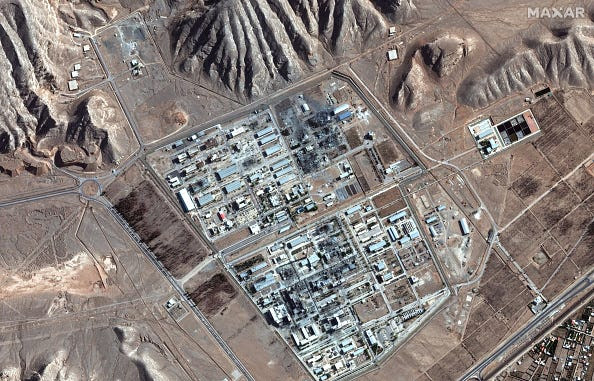Alberta
Healthcare Innovation Isn’t ‘Scary.’ Canada’s Broken System Is

From the Frontier Centre for Public Policy
“Our healthcare system is a monopoly installed at every level with the culture inherent to monopolies, whether public or private. The culture is based on regulation and budgetary controls, closed to the outside world, impermeable to real change, adaptation and innovation. It is a culture that favours inefficiency.”
Why is the Globe and Mail afraid of healthcare reform that works?
The Globe and Mail editorial board seems to find healthcare innovation “scary.”
On Sept. 3, it published an editorial called “Danielle Smith has a scary fix for healthcare,” criticizing the Alberta Premier’s idea to introduce competition in the province’s health system. Premier Smith’s plan involves third-party leasing of underperforming hospitals while the government retains ownership and continues funding.
Let’s be clear: the real problem isn’t Smith’s proposal – it’s the current state of healthcare across Alberta and Canada. Sticking with the status quo of underperformance is what should truly alarm us. Rather than attacking those trying to fix a broken system, we should focus on much-needed reforms.
So, what exactly is Smith proposing? Contrary to what you may have heard, she isn’t dismantling Alberta’s universal healthcare or introducing an American style system. Yet the public sector unions – and certain media outlets – seem to jump into hysterics any time innovation is proposed, particularly when it involves private-sector competition.
Predictably, groups like Friends of Medicare, with their union ties, are quick to raise the alarm. Yet media coverage often fails to disclose this affiliation, leaving readers with the impression that their views are impartial. Take Global News’ recent coverage, for example:
In late August, Global News reporter Jasmine King presented a story on potential changes to Alberta’s healthcare system. She featured a spokesperson from Friends of Medicare, who predicted that the changes would be detrimental to the province. However, the report failed to mention that Friends of Medicare is affiliated with public sector unions and has a history of opposing any private sector involvement in healthcare. The news segment also included a statement from the dean of a medical faculty, who was critical of the proposed changes. Missing from the report were any voices in favour of healthcare innovation.
Here’s the real issue: Canada is an outlier in its resistance to competition in healthcare. Many European countries, which also have universal healthcare systems, allow private and non-profit organizations to operate hospitals. These systems function effectively without the kind of fear-mongering that dominates the Canadian debate.
Instead of fear-based comparisons to the U.S., let’s acknowledge the success stories of countries that have embraced a mixed system of healthcare delivery. But lazy, fear-driven reporting means we keep hearing the same tired arguments against change, with little context or consideration of alternatives that are working elsewhere.
It’s ironic that The Globe and Mail editorial aims to generate fear about a health care policy proposal that could, contrary to the alarmist reaction, potentially improve efficiency and care in Alberta. The only thing we truly have to fear in healthcare is the stagnation and inefficiency of the current system.
Claude Castonguay, the architect of Quebec’s Medicare system, released a report in 2008 on that province’s health system, calling for increased competition and choice in healthcare.
“In almost every other public and private areas, monopolies are simply not accepted,” he wrote. “Our healthcare system is a monopoly installed at every level with the culture inherent to monopolies, whether public or private. The culture is based on regulation and budgetary controls, closed to the outside world, impermeable to real change, adaptation and innovation. It is a culture that favours inefficiency.”
The fear of competition is misguided, and Canadians are increasingly open to the idea of paying for private treatment when the public system falls short.
Let’s stop demonizing those who propose solutions and start addressing the real issue: a system that is no longer delivering the care Canadians need. The future of healthcare depends on embracing innovation, not clinging to outdated models and misplaced fears.
Joseph Quesnel is a Senior Research Fellow with the Frontier Centre for Public Policy.
Alberta
Alberta school boards required to meet new standards for school library materials with regard to sexual content

Alberta’s government has introduced new standards to ensure school library materials are age-appropriate.
School libraries should be safe and supportive places where students can learn and explore without being exposed to inappropriate sexual content. However, in the absence of a consistent standard for selecting age-appropriate library materials, school boards have taken different approaches, leading to concerns about safeguards in place.
In response to these concerns, and informed by feedback from education partners and the public, Alberta’s government has created standards to provide school boards with clear direction on the selection, availability and access to school library materials, such as books.
“Our actions to ensure that materials in school libraries don’t expose children to sexual content were never about banning books. These new standards are to ensure that school boards have clear guidance to ensure age-appropriate access to school library materials, while reflecting the values and priorities of Albertans.”
The new standards set clear expectations for school library materials with regard to sexual content and require school boards to implement policies to support these standards.
Standards for school library materials
Under the new standards, school libraries are not permitted to include library materials containing explicit sexual content. Non-explicit sexual content may be accessible to students in Grade 10 and above, provided it is age-appropriate.
“Protecting kids from explicit content is common sense. LGBTQ youth, like all children, deserve to see themselves in stories that are age-appropriate, supportive and affirming – not in material that sexualizes or confuses them.”
School boards must also regularly review their school library collections, publish a full list of available materials and ensure that a staff member supervises students’ access to school library materials. School boards will have to remove any materials with explicit sexual content from their school libraries by October 1.
School board policies and procedures
All school boards must have publicly available policies that align with the new standards for selecting and managing library materials by January 1, 2026. School boards can either create new policies or update existing ones to meet these requirements.
These policies must outline how school library materials are selected and reviewed, how staff supervise students’ access throughout the school day, and how a student, parent, school board employee or other member of the school community can request a review or removal of materials in the school library. School boards are also required to clearly communicate these policies to employees, students and parents before January 2026.
“A robust, grade- and age-appropriate library catalogue is vital for student success. We welcome the ministry’s initiative to establish consistent standards and appreciate the ongoing consultation to help craft a plan that will serve our families and communities well.”
“Red Deer Public Schools welcomes the new provincial standards for school library materials. Our division is committed to maintaining welcoming, respectful learning spaces where students can grow and thrive. Under the new standards for school libraries, we remain dedicated to providing learning resources that reflect our values and support student success.”
Quick facts
- The new standards will apply to public, separate, francophone, charter and independent schools.
- The ministerial order does not apply to municipal libraries located within schools or materials selected for use by teachers as learning and teaching resources.
- From May 26 to June 6, almost 80,000 people completed an online survey to provide feedback on the creation of consistent standards to ensure the age-appropriateness of materials available to students in school libraries.
Related information
- Ministerial Order
- School library standards engagement
- Reference Materials: Content warning: this document contains graphic content that may be disturbing to viewers and is not appropriate for young viewers. Viewer discretion is advised.
Alberta
Fourteen regional advisory councils will shape health care planning and delivery in Alberta

Regional health councils give Albertans a voice
Albertans want a health care system that reflects where they live and adapts to the unique needs of their communities. As part of the province’s health care refocus, Alberta’s government committed to strengthening community voices by providing more opportunities for Albertans to bring forward their local priorities and offer input on how to improve the system.
The regional advisory councils, made up of 150 members from 71 communities, will advise Alberta’s four health ministries and the newly refocused health agencies: Primary Care Alberta, Acute Care Alberta, Assisted Living Alberta and Recovery Alberta. Each council will explore solutions to local challenges and identify opportunities for the health system to better support community decision-making.
“By hearing first-hand community feedback directly, we can build a system that is more responsive, more inclusive and ultimately more effective for everyone. I am looking forward to hearing the councils’ insights, perspectives and solutions to improve health care in all corners of our province.”
“Regional advisory councils will strengthen acute care by giving communities a direct voice. Their insights will help us address local needs, improve patient outcomes and ensure timely access to hospital services.”
“A ‘one-size-fits-all’ approach does not address unique regional needs when it comes to mental health and addiction challenges. These councils will help us hear directly from communities, allowing us to tailor supports and services to meet the needs of Albertans where they are.”
“Every community has unique needs, especially when it comes to seniors and vulnerable populations. These regional advisory councils will help us better understand those needs and ensure that assisted living services are shaped by the people who rely on them.”
Members include Albertans from all walks of life, health care workers, community leaders, Indigenous and municipal representatives, and others with a strong tie to their region. About one-third of members work in health care, and more than half of the council chairs are health professionals. Almost one-quarter are elected municipal officials, including 10 serving as chairs or vice-chairs. Ten councils also include a representative from a local health foundation.
Council members will share local and regional perspectives on health care services, planning and priorities to help ensure decisions reflect the realities of their communities. By engaging with residents, providers and organizations, they will gather feedback, identify challenges and bring forward ideas that may not otherwise reach government.
Through collaboration and community-informed solutions, members will help make the health system more responsive, accessible and better able to meet the needs of Albertans across the province.
“As Primary Care Alberta works to improve access to primary health care services and programs across Alberta, we are grateful to have the opportunity to tap into a dedicated group of community leaders and representatives. These people know their communities and local needs, and we look forward to learning from their experiences and knowledge as we shape the future of primary care in Alberta.”
“The regional advisory councils will help to bring forward the voices of patients, families and front-line providers from every corner of Alberta. Their insights will help us plan smarter and deliver care that’s timely, effective and truly local. We look forward to working closely with them to strengthen hospital and surgical services across the province.”
“Nobody understands the health care challenges unique to a community better than the people who live there. The regional health advisory councils are made up of those living and working on the front lines across the province, ensuring we are getting the perspective of Albertans most affected by our health care system.”
“Alongside Recovery Alberta’s staff and physician team, these regional advisory councils will build upon the high standard of mental health, addiction and correctional health services delivered in Alberta.”
Indigenous Advisory Council
Alberta’s government continues to work directly with Indigenous leaders across the province to establish the Indigenous Advisory Council to strengthen health care services for First Nation, Métis and Inuit communities.
With up to 22 members, including Indigenous health care workers, community leaders and individuals receiving health care services, the council will represent diverse perspectives across Alberta. Members will provide community perspectives about clinical service planning, capital projects, workforce development and cultural integration in health care.
Related information
-

 Business2 days ago
Business2 days agoCarney government should recognize that private sector drives Canada’s economy
-

 Alberta1 day ago
Alberta1 day agoAlberta school boards required to meet new standards for school library materials with regard to sexual content
-

 Business2 days ago
Business2 days agoCannabis Legalization Is Starting to Look Like a Really Dumb Idea
-

 Bruce Dowbiggin2 days ago
Bruce Dowbiggin2 days agoThe Covid 19 Disaster: When Do We Get The Apologies?
-

 Alberta2 days ago
Alberta2 days agoFourteen regional advisory councils will shape health care planning and delivery in Alberta
-

 Environment1 day ago
Environment1 day agoEPA releases report on chemtrails, climate manipulation
-

 Crime1 day ago
Crime1 day agoSweeping Boston Indictment Points to Vast Chinese Narco-Smuggling and Illegal Alien Labor Plot via Mexican Border
-

 Business18 hours ago
Business18 hours agoCBC six-figure salaries soar






